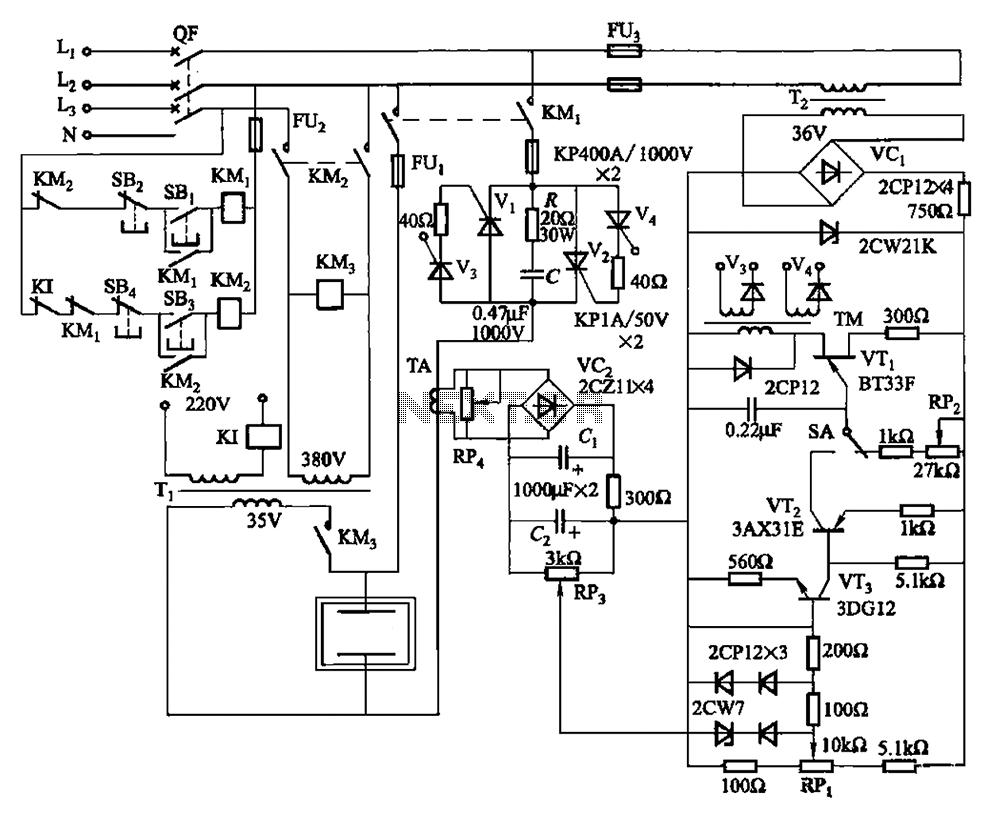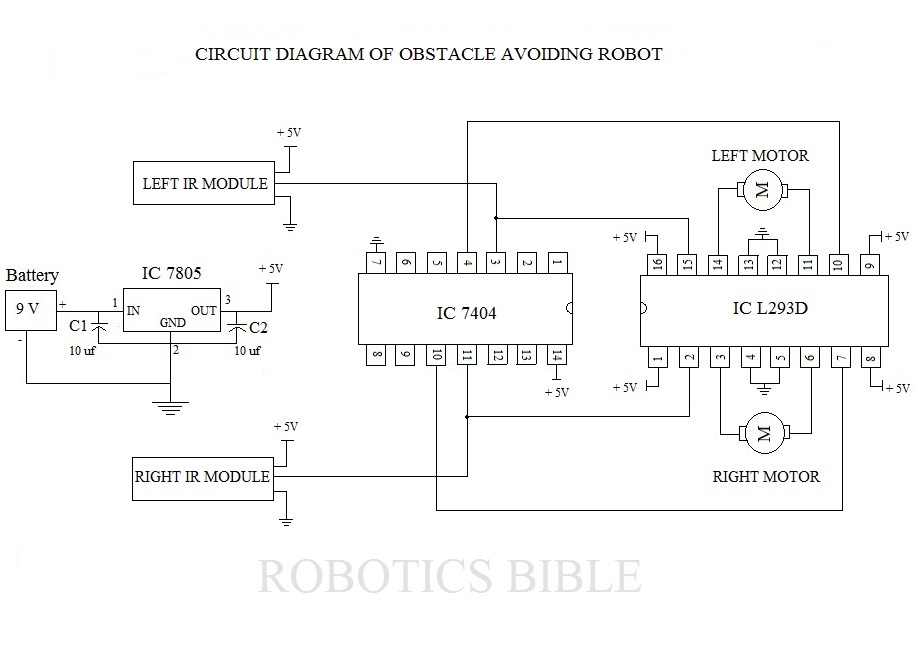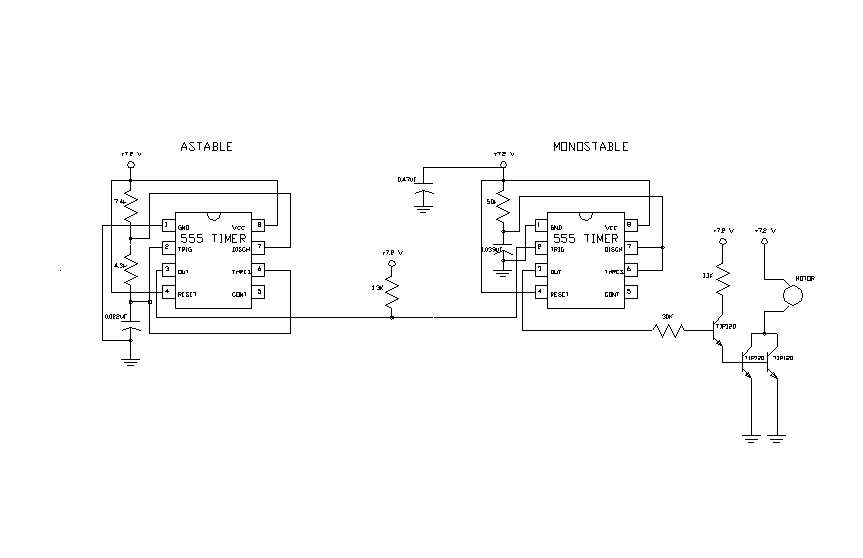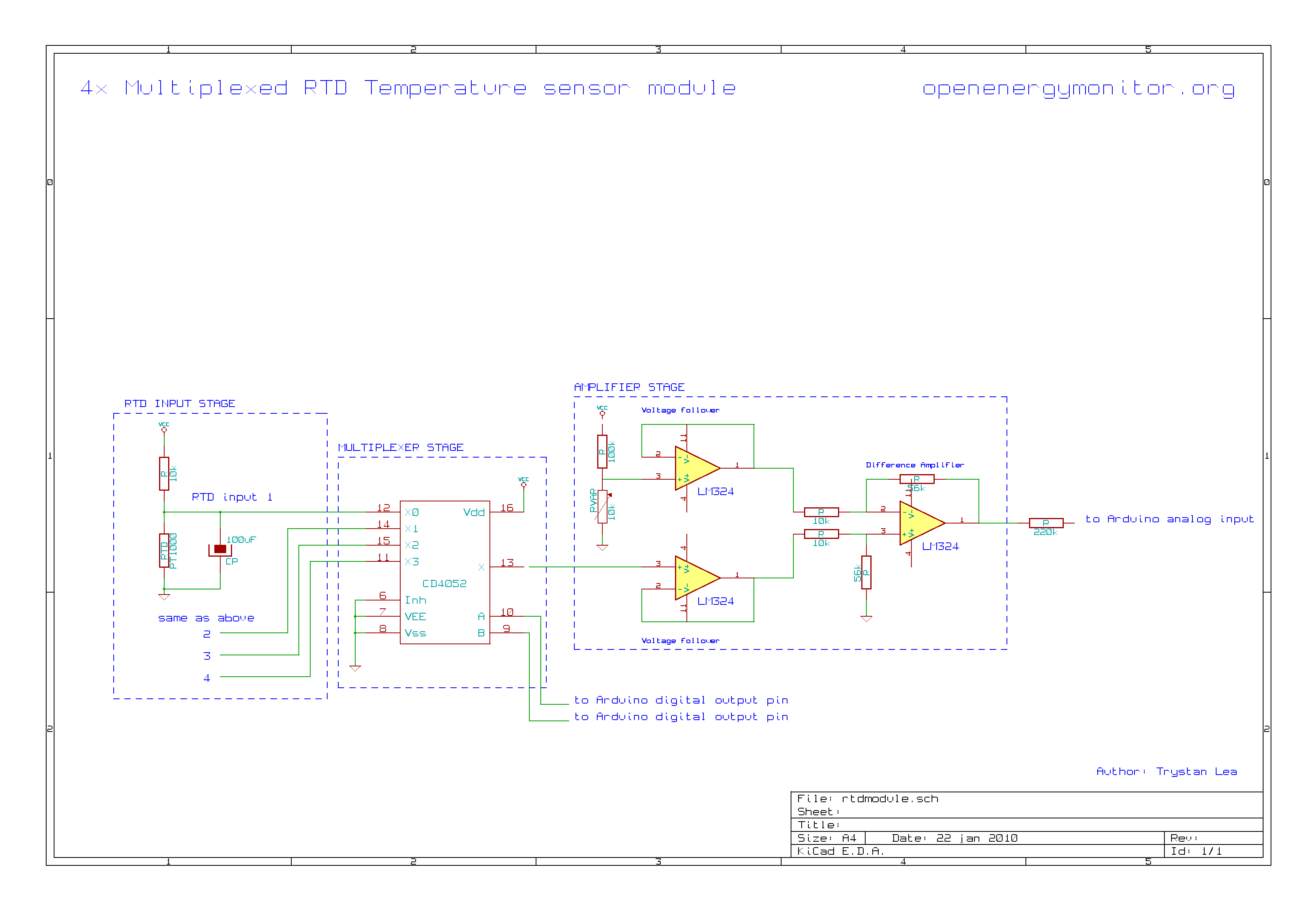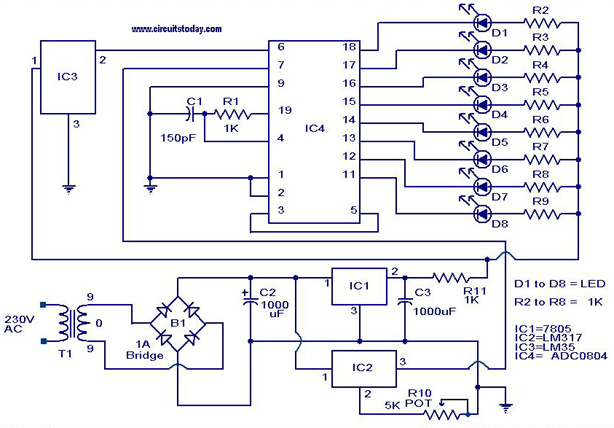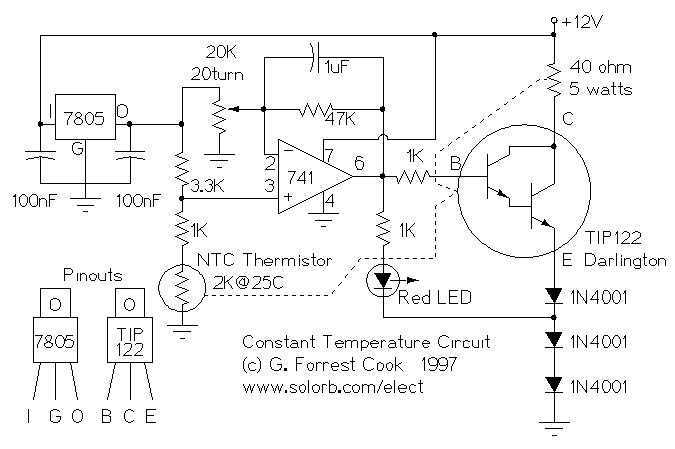
Temperature controller
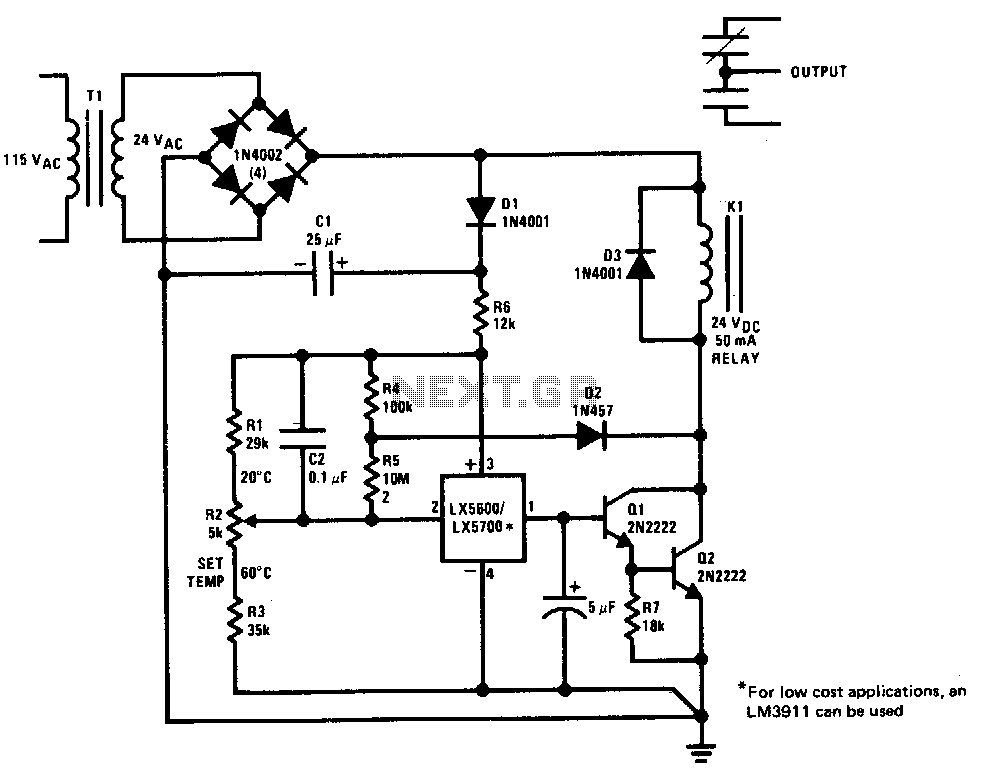
The sensor is housed in a standard TO-5 or TO-46 package, suitable for measuring surface or air temperatures. Small clip-on heat sinks can be employed to enhance thermal contact. A simple probe can be constructed using heat-shrink tubing and RTV silicone rubber. A three-lead plus shield cable is recommended, with the shield connected to pin 4. This sensor can be utilized in various applications, including baths, ovens, oven-temperature protection, and home thermostats. Long-term stability and repeatability are better than 0 °C.
The described sensor, available in TO-5 or TO-46 packages, is designed for precise temperature measurements in various environments. The compact form factor allows for easy integration into diverse applications. The use of small clip-on heat sinks is advantageous as it improves thermal conductivity between the sensor and the environment, ensuring accurate readings.
To construct a sensor probe, heat-shrink tubing is utilized to provide insulation and protection against environmental factors. RTV silicone rubber serves as an effective sealing material, ensuring that the probe remains moisture-resistant and durable over time. This construction method is particularly useful in applications where the sensor may be exposed to harsh conditions.
The recommended three-lead plus shield cable configuration enhances the sensor's performance by minimizing electromagnetic interference. The shield, connected to pin 4, serves to ground any extraneous noise, which is critical in maintaining the integrity of the temperature readings. This configuration is especially important in environments where multiple sensors may be in proximity to one another.
Applications for this sensor range from industrial settings, such as baths and ovens, to residential uses like home thermostats. In industrial ovens, the sensor can provide real-time feedback to maintain optimal temperature conditions, while in home heating systems, it can contribute to energy efficiency by accurately controlling the indoor climate.
The sensor's long-term stability and repeatability, better than 0 °C, indicate its reliability for continuous monitoring. This characteristic is essential in applications requiring precise temperature control, where even minor fluctuations can significantly impact performance. Overall, the described sensor offers a versatile solution for temperature measurement across various fields, combining ease of use with robust performance.The sensor is a standard TO-5 or TO-46 package. For surface or air temperature sensing. Small clip-on heat sinks can be used. A simple probe can be made using heat-shrink tubing and RTV silicon rubber. Three-leads-plus-shield cable is a good choice for wire with the shield connected to pin 4. The controller can be used for baths, ovens, oven-temperature protection, or even home thermostats Long-term stability and repeatability is better than 0 °C. 🔗 External reference
The described sensor, available in TO-5 or TO-46 packages, is designed for precise temperature measurements in various environments. The compact form factor allows for easy integration into diverse applications. The use of small clip-on heat sinks is advantageous as it improves thermal conductivity between the sensor and the environment, ensuring accurate readings.
To construct a sensor probe, heat-shrink tubing is utilized to provide insulation and protection against environmental factors. RTV silicone rubber serves as an effective sealing material, ensuring that the probe remains moisture-resistant and durable over time. This construction method is particularly useful in applications where the sensor may be exposed to harsh conditions.
The recommended three-lead plus shield cable configuration enhances the sensor's performance by minimizing electromagnetic interference. The shield, connected to pin 4, serves to ground any extraneous noise, which is critical in maintaining the integrity of the temperature readings. This configuration is especially important in environments where multiple sensors may be in proximity to one another.
Applications for this sensor range from industrial settings, such as baths and ovens, to residential uses like home thermostats. In industrial ovens, the sensor can provide real-time feedback to maintain optimal temperature conditions, while in home heating systems, it can contribute to energy efficiency by accurately controlling the indoor climate.
The sensor's long-term stability and repeatability, better than 0 °C, indicate its reliability for continuous monitoring. This characteristic is essential in applications requiring precise temperature control, where even minor fluctuations can significantly impact performance. Overall, the described sensor offers a versatile solution for temperature measurement across various fields, combining ease of use with robust performance.The sensor is a standard TO-5 or TO-46 package. For surface or air temperature sensing. Small clip-on heat sinks can be used. A simple probe can be made using heat-shrink tubing and RTV silicon rubber. Three-leads-plus-shield cable is a good choice for wire with the shield connected to pin 4. The controller can be used for baths, ovens, oven-temperature protection, or even home thermostats Long-term stability and repeatability is better than 0 °C. 🔗 External reference
Warning: include(partials/cookie-banner.php): Failed to open stream: Permission denied in /var/www/html/nextgr/view-circuit.php on line 713
Warning: include(): Failed opening 'partials/cookie-banner.php' for inclusion (include_path='.:/usr/share/php') in /var/www/html/nextgr/view-circuit.php on line 713
